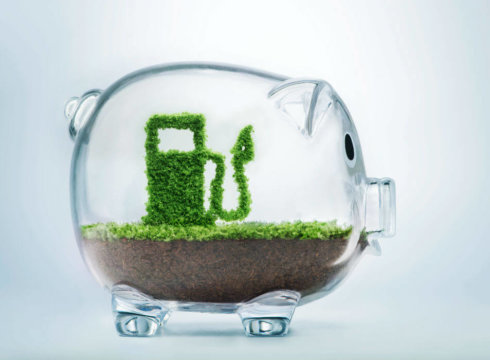SUMMARY
The Push For Clean Fuel And A Mobility Ecosystem That Offers Cleaner, Faster, and Cheaper Travel Are Shaping The Future Of Mobility
Inc42 Daily Brief
Stay Ahead With Daily News & Analysis on India’s Tech & Startup Economy
Imagine a future where you wake up in the morning to catch a flying cab or a shared driverless cab to get to work, after which you zip off in your Hyperloop pod for a meeting in another city. If that’s not all, you take your family for an orbital vacation on a space station. No longer the stuff of sci-fi movies, these things are fast becoming a reality. The future is here. So much so that the current rate of innovation would probably make Moore’s law a thing of past.
The convergence of these technology trends with social forces like rapid urbanisation is conducive to such transformations, especially in the field of mobility. With urbanisation expected to increase average city density by 30% over the next 15 years and the concurrent rising demand for commute options, traditional mobility systems are stretched to their limits.
Besides, livability and sustainability are now higher on the agendas of both urban planners and residents. These factors are giving rise to a new age mobility ecosystem that offers cleaner, faster, cheaper and consumer-centric travel.
In the global scenario, cities like Singapore and Amsterdam are leading the way in bringing the future to the present in the mobility sector by limiting congestion and pollution, and providing efficient public transport options. By mid-2016, cab-sharing companies had already attracted an investment of ~$20 Bn; at the same time, global electric vehicle sales reached a record high of 750,000 in 2016.
India is among one of the few countries on track to achieve its national targets under the Paris agreement with its plan to sell only electric cars by 2030. Further, to promote the adoption of electric vehicles in the country, the Indian government is planning to extend financial support of up to $1.3 Bn (INR 8,730 Cr) to FAME II. Given these factors and some futuristic trends elaborated below, the mobility landscape could look very different in the coming 15 years.
First, countries world over are increasingly in search of “clean” fuels. This is one of the major factors driving the global transition to electric vehicles, and the unfolding of ecosystems around this. The EV battery segment has seen continuous improvements with costs of lithium ion batteries dropping by 65% between 2010 and 2015; charging time too has reduced drastically.
Recently, an electric carmaker named Fisker filed a patent for a revolutionary solid-state battery, which can charge an EV battery in just one minute with an astounding 804-km single range. Meanwhile, the Government of Israel recently collaborated with Israeli start-up ElectRoad to install a public bus route in Tel Aviv, using an under-the-pavement wireless technology that eliminates the need for plug-in recharging stations. Globally, around $2 Bn has been raised by EV startups and the EV segment is expected to gain more market share from conventional vehicles and represent ~50% of new vehicle sales globally by 2030.
Second, we are living in a shared economy era where ownership has been segregated from usage. Shared mobility is likely to curb ~1/3rd of expected increase in vehicles from urbanisation and macroeconomic growth by 2030. In addition, stringent government rules regarding vehicle emissions will further boost the EV market and global car-sharing industry, which is likely to exceed $16.5 Bn by 2024.
Mobility options like car sharing, high-capacity public transit, and on-demand ride services are gaining significant traction as lucrative, cost-effective, and convenient modes of travel in big cities to tackle the rising mobility demand with rapid population growth. Shared mobility offers simplistic, on-demand, and customised means of transportation with individual travellers at the heart of the ecosystem.
Third, artificial intelligence and cognitive learning based on big data are driving newage driving solutions. Global automakers, in collaboration with technology companies, are pursuing and investing in the creation of autonomous driving vehicles. With supportive regulations, about 15% of all new vehicles sold globally in 2030 could be fully autonomous. Further, the confluence of shared mobility and autonomous driving could trigger a new transportation model: a fleet of shared, self-driving, electric cars providing on-demand, door-to-door mobility.
Last, some of the traditional automakers from the last decade will have to give way to emerging tech leaders who will dominate this landscape. We are witnessing a wave of technological innovations, from Virgin Group’s Hyperloop One train that will travel from London to Scotland in under 50 minutes to Piaggio Group’s robotic personal helper GITA, which will carry one’s belongings. These disruptions are changing the entire dynamics of travel and commuting, thereby redefining the mobility landscape.
In India, a recent policy alignment has laid the foundation for a cohesive ecosystem for a mobility revolution. Measures such as tax incentives for EVs, push for electric buses, and procurement of electric fleets by the state-run Energy Efficiency Services Ltd (EESL), along with the upcoming National Electric Vehicle Policy, will help the nation leapfrog as the leader in e-mobility by ushering in a new era of sustainable development.
When looked at in isolation, each of these futuristic trends is significant, but their combined effect will be very powerful in realising the future of mobility.
[This article is Powered by YES Bank & is part of branded content series]
Note: We at Inc42 take our ethics very seriously. More information about it can be found here.


